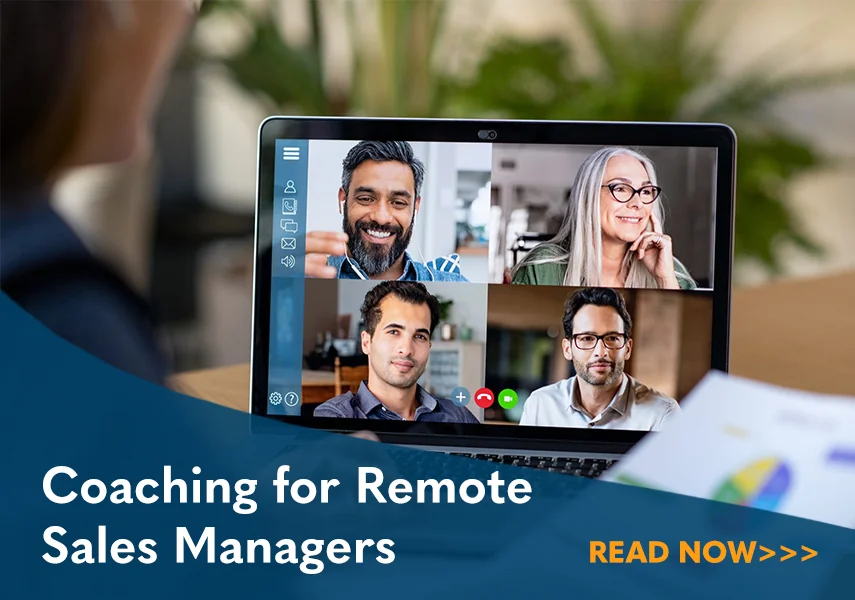Creating a Winning Virtual Workspace for Selling Remotely

A term from French theater, popular amongst academics and film critics, is mise en scene. Often translated as “placing the stage,” this refers to several features—such as setting, décor, lighting, depth of space, costumes, and movement—that create the environment of a play or scene in a movie. At first glance, you may wonder how a fancy French expression relates to sales, but with so many sales professionals working virtually, it’s useful to think about these things when creating your personal workspace to look your best in front of coworkers and clients. Now that you are, in effect, inviting people into your home, consider these points to set the stage for success in your virtual home office:
It’s been said a happy home is noisy, and this is never more accurate than when you work from home. With kids off from school, you may now contend with loud movies or video games that hinder your ability to concentrate, let alone communicate. A wireless headset with a microphone can block noise and keep your hands free to take notes or tap on your phone. These reduce static interference, modulate voice better than cell phones or computers, and won’t cut out when you are on the move at home.
Be aware of movement in a virtual work environment. It can be helpful to talk with your hands, especially for emphasis, and sipping from your mug creates interaction. However, avoid reaching off camera. This is a distraction on a video call. Not only can it seem abrupt, but your physical presence can change, such as your proportion to your surroundings, shifting attention from what you are saying to what you are doing.
Consider how your décor appears to coworkers and clients. On a video call, they can see the pictures, memorabilia, and books behind you. While these are great conversation starters— and may help you bond with a client—remove anything that distracts or could create a negative impression. A book title can be offensive if its reputation is racy or controversial. Also, during a presentation, you don’t want a prospect zoning out on your kaleidoscopic lava lamp. A virtual background, like a landscape or company logo, is always a safe bet.
Think about proximity and proportion. A low-placed video camera can make you loom large and create an uncomfortable experience. Sitting too close can reveal every blemish on your face, and no one is attractive so highly magnified. If necessary, prop your monitor, laptop, or cell phone on a stand or box to frame the best position. Ideally, you want your shoulders visible, and allow enough wall space so you don’t appear cramped. For laptops and phones, adjust the angle of the screen to reduce glare.
Look at your lighting. Natural light cuts down on distracting or ominous shadows. Remember, this a conference call, not a horror movie. Consider raising the blinds or shades, as this opens the room, creating an inviting and comfortable atmosphere for your virtual guests. Be aware of shiny objects that reflect sunlight. If possible, work with the light source in front of you. Also, note anything that passes the window behind you, such as dog walkers, landscapers, or gardeners.
When choosing what to wear, color might matter. Video cameras often have trouble handling contrasts between dark and bright objects. As such, red, white, and black can be difficult to balance. For someone with darker skin, light colors could make your shirt glow. Also, avoid complex patterns, such as stripes, plaid, or houndstooth, as these can appear to move on video—great in a sci-fi film but distracting on a client call. Try different colors against your background. If they’re too close, you could pixilate, especially when moving.
One does not have to be a filmmaker to appreciate the elements of mise en scene. In many ways, it plays a role in our everyday lives, from the furniture we choose, to the art we hang, to the clothes we wear. This becomes relevant now that so many sales professionals work from home. While most like to keep their personal and professional lives separate, this isn’t always possible when your private home office doubles as your defacto work cubicle open to colleagues and clients alike. A little awareness can maintain the professionalism our careers demand—even at the cost of the personal space we crave—and helps to ensure productivity and success in our new work environments.

- Account Planning (11)
- Awards (49)
- Client Testimonial (37)
- Personal Branding (19)
- Podcast (11)
- Research (70)
- Sales Career Development (87)
- Sales Coaching (156)
- Sales Consulting (137)
- Sales Culture (170)
- Sales Enablement (354)
- Sales Leadership (109)
- Sales Management (248)
- Sales Negotiation (16)
- Sales Prospecting (125)
- Sales Role-Playing (18)
- Sales Training (235)
- Selling Strategies (263)
- Soft Skills (70)
- Talent Management (94)
- Trusted Advisor (27)
- Virtual Selling (49)
- Webinar (9)


























